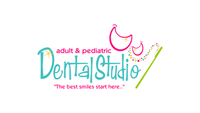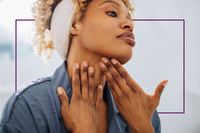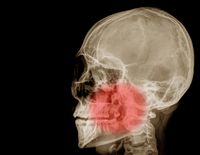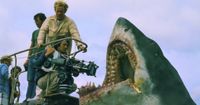Explore web search results related to this domain and discover relevant information.

Side-to-side jaw movement – place an object like a tongue depressor between your teeth and move your jaw side to side.
Find out how to fix jaw misalignment naturally with exercises, posture tips, and lifestyle changes. Get practical insights to ease discomfort.Jaw misalignment is more common than many people realize, and it doesn’t always require surgery to correct. Whether caused by genetics, habits like teeth grinding, or an injury, an uneven jaw can lead to issues such as headaches, difficulty chewing, and even changes in facial appearance.While natural approaches are effective for many, severe cases may require surgical correction. For example, significant underbites, overbites, or skeletal issues that affect facial balance and function may not improve with exercises alone. The good news is that most mild to moderate jaw alignment problems can be managed without surgery.If you’re wondering how to fix a misaligned jaw naturally, the good news is that there are safe and effective approaches that can help improve alignment and reduce discomfort over time.
Discover the best destinations for jaw surgery in our latest blog post. We explore top clinics, expert surgeons, and patient experiences to help you find the ideal place for your procedure. Whether you’re seeking affordability, advanced technology, or excellent care, we’ve got you covered!
Access to advanced facilities and cutting-edge technology plays a critical role in the success of jaw surgery. Many top-tier clinics around the world utilize state-of-the-art equipment for diagnostic imaging and surgical procedures. This includes 3D imaging systems that allow for precise planning and execution, enhancing the overall outcomes of surgeries.Jaw Surgery in Macedonia, Cary, has gained attention for its modern facilities equipped with the latest technological advancements. Surgeons trained in innovative techniques and practices provide patients with high-quality care. The emphasis on a sterile environment and proper surgical protocols further enhances the safety and efficiency of the procedures.Medical facilities specializing in jaw surgery often utilize advanced technologies and techniques to ensure optimal surgical outcomes. State-of-the-art imaging systems, such as 3D scans and digital planning software, enhance preoperative assessments. These tools allow surgeons to visualize complex anatomical structures in detail, leading to more precise and customized treatment plans.In locations renowned for jaw surgery, such as Macedonia, Cary, practitioners are trained in the latest surgical innovations and methodologies. This commitment to excellence is reflected in routine updates to equipment and practices. Minimally invasive techniques have gained popularity, often resulting in reduced scarring and faster healing.

After wrapping their fingers with gauze, doctors or dentists place their thumbs inside the mouth on the lower back teeth. They place their other fingers around the bottom of the lower jaw.
They press down on the back teeth and push the chin up until the jaw joints return to their normal location.
The maxilla, which is the upper part of your jaw. It holds your top teeth in place and doesn't move.
The mandible, which is the lower part of your jaw. You move it when you talk or chew. It also holds your lower teeth in place.The types of jaw injuries and disorders that can cause problems are dislocations, fractures, misaligned teeth, and more. Learn about them here.Your jaw is a set of bones that holds your teeth.Jaw defects, which are birth defects in which your jaw could be missing or deformed.


Jaw wiring. Jaw wiring is used to position the jaw in a certain place or provide support in the case of a fracture or break.
An uneven jaw can contribute to issues with eating, sleeping, talking, and breathing. Trauma, TMJ, teeth misalignment, and more can lead to an uneven jaw. We’ll explain the causes of an uneven jaw and how it can be treated at home or with surgery.An uneven jaw can contribute to issues with eating, sleeping, talking, and breathing. There are a range of causes of an uneven jaw. Some cases can be treated and improved with physical therapy.Read on to learn more about uneven jaw causes, treatments, and more.Symptoms of an uneven jaw are often similar to those of other conditions.

The Jawzrsize device is designed for the user to place it between the top and bottom front teeth, then bite down and release.
But does Jawzrsize actually work, and do you even need to be exercising your jaw in the first place?Jawzrsize is a tool that claims to slim and define jawlines. But does Jawzrsize work? Here, experts share the potential benefits and risks.There's no shame in wanting a defined jawline and contoured cheeks. But beyond a good bronzer and a nice face massage, there isn't a permanent way to make bold changes to your face outside of cosmetic surgery or filler like Kybella.Available from 20 to 50 pounds of resistance in 5 to 10 pound increments, Jawzrsize claims to activate more than 57 muscles in the face and increase blood flow to the area, defining your jawline with consistent use.

The maxilla, which is the upper part of your jaw. It holds your top teeth in place and doesn't move.
The mandible, which is the lower part of your jaw. You move it when you talk or chew. It also holds your lower teeth in place.The types of jaw injuries and disorders that can cause problems are dislocations, fractures, misaligned teeth, and more. Learn about them here.Your jaw is a set of bones that holds your teeth.Jaw defects, which are birth defects in which your jaw could be missing or deformed.

The jawbone connects to the skull at the temporomandibular joints, better known as the TMJs, on either side of your head in front of your ears. Ligaments hold the bone in place, and muscles let your jaw open and close.
The doctor will check the jawbone for stability. With the straight blade test, the doctor may place a tongue blade (tongue depressor, a flat wooden stick) between your teeth and evaluate whether you can hold the blade in place.Manual repositioning. Your doctor or dentist will first move your jaw back into place. They put their thumbs inside your mouth on your back bottom teeth and hold the bottom of your jaw with their fingers. Then they manipulate your jaw down and backward until it pops into place.Barton bandage. They will often wrap a bandage under your jaw and around the back of your head to keep your jaw in place while it heals.The U-shaped mandible is the largest and main bone of the lower part of the face. There are two chief areas of the mandible bone: the “body” -- the chin out to the jaw angle -- and the rami, the two upward branches.
Resisted closing exercise. Keep your thumb under your chin, then take your index finger from the same hand and place it on the ridge between your chin and lower lip. Gently push as you close your mouth. Gently stretching your jaw and joint area can also help keep TMJ pain from returning.
Rocabado 6x6 exercises are some of the most well-known physical therapy exercises for TMJ pain relief. This routine includes a series of jaw exercises: Rest position of the tongue. Place the tip of the tongue on the mouth's upper palate, putting gentle pressure on the palate.Control of TMJ rotation. Open and close the jaw while gently pressing the tip of the tongue on the palate. Rhythmic stabilization technique. Place two fingers on the chin.Tongue position at rest. Place the tip of the tongue on the palate, just behind the front teeth. Teeth apart. Keep the bottom and upper teeth apart to help relax the jaw.Strengthening. Place a stack of tongue depressors between the top and bottom rows of teeth. The number of tongue depressors used will depend on the size of the opening between your upper and lower rows of teeth. You want enough to give your jaw a good stretch.

My Jaw Feels Out of Place on One Side, What Should I Do? Consult Koala Centers For Sleep & TMJ Disorders Today and Take the Help of Our Professionals.
If you experience the sensation that your jaw has popped out of place or shifted to one side, it can be quite odd and concerning. This can occur for a variety of reasons, including bruxism, jaw dislocation, or temporomandibular joint (TMJ) dysfunction. If you recently experienced trauma or sudden force on one side of your jaw, your discomfort may be caused by the mandible shifting out of its proper position.If you have a dislocated jaw, you should seek medical attention rather than attempting to pop it back into place yourself. While it may be tempting to try and manipulate your jaw back into place, doing so can result in more damage and pain. When you visit a medical professional, they will assess the severity of your dislocation to determine the best course of action.Why does one side of my jaw pop out of place? How do you tell if your jaw is partially dislocated? How do you fix a dislocated jaw on one side?This is known as dislocation and is often accompanied by severe pain, restricted movement, and a popping or locking feeling in the jaw. In addition, TMJ dysfunction is a common culprit for this strange sensation. Conditions such as TMJ disorder (TMD) can cause the jaw to pop, click, or shift out of alignment due to inflammation, muscle tension, or structural abnormalities within the joint.

For more information on oral surgery, and to schedule your consultation, call Pacific Oral & Facial Surgery Center in Livermore and Tracy today.
At the hospital, if you have breathing problems, heavy bleeding occurs, or severe swelling of your face, a tube may be placed into your airway to help you breathe. ... Treatment for a fractured jaw depends on how badly the bone is broken. If you have a minor fracture, it can heal on its own.
Surgery is often needed for moderate to severe fractures. The jaw may be wired to the teeth of the opposite jaw to keep the jaw stable while it heals. Jaw wires are usually left in place for 6 to 8 weeks. Small rubber bands (elastics) are used to hold the teeth together.Hold the jaw gently in place with your hands on the way to the emergency room. You can also wrap a bandage under the jaw and over the top of the head.If your jaw is dislocated, the provider may be able to place it back into the correct position using the thumbs.Learn about Jaw - broken or dislocated or find a doctor at Mount Sinai Health System.

One of these bones is the mandible, more commonly known as the lower jaw. Recognized as one of the most prominent bones in the human skull, the mandible is responsible for holding the bottom row of teeth in place and providing the lower face and chin with their shape.
Have you heard about the mandible but remain unsure what it is? Read our guide to find out all about it!The mandible is located in the lower jaw, directly below the maxilla (upper jaw). The mandible is formed during the developmental stages of pregnancy, when a structure known as the pharyngeal arch develops the coronoid and the condyloid.The mandible consists of three parts. The first part is the body, a curved and horizontal structure. The second and third parts are the rami, which are vertical structures that join the ends of the body at the angle of the jaw.Other issues: Chewing issues occur when a jaw isn’t aligned correctly. As a result, it may be difficult to bite into food or to keep food in your mouth while chewing. Painful and stiff temporomandibular joint disorders (TMJs) are sometimes present. Additionally, certain sounds may be difficult to make, and you may have trouble speaking clearly.
The temporomandibular joint (TMJ), or jaw joint, is a synovial joint that allows the complex movements necessary for life. It is the joint between condylar head of the mandible and the mandibular fossa of the temporal bone.
Chewing and talking require a combination of jaw movements in a number of directions[18][19].Original Editor - Heather Mariner
More specifically, they are the ... lower jaw) and the temporal bone (the side and base of the skull). The TMJs are among the most complex joints in the body. These joints, along with several muscles, allow the mandible to move up and down, side to side, and forward and back. When the mandible and the joints are properly aligned, smooth muscle actions, such as chewing, talking, yawning, and swallowing, can take place...
More specifically, they are the joints that slide and rotate in front of each ear, and consist of the mandible (the lower jaw) and the temporal bone (the side and base of the skull). The TMJs are among the most complex joints in the body. These joints, along with several muscles, allow the mandible to move up and down, side to side, and forward and back. When the mandible and the joints are properly aligned, smooth muscle actions, such as chewing, talking, yawning, and swallowing, can take place.Detailed information on temporomandibular disorder, including causes, symptoms, and treatment.Internal derangement of the joint. This means a dislocated jaw or displaced disk, (cushion of cartilage between the head of the jaw bone and the skull), or injury to the condyle (the rounded end of the jaw bone that articulates with the temporal skull bone).In many cases, the actual cause of this disorder may not be clear. Sometimes the main cause is excessive strain on the jaw joints and the muscle group that controls chewing, swallowing, and speech. This strain may be a result of bruxism. This is the habitual, involuntary clenching or grinding of the teeth.


The bulk of “Jaws” is set on an island; nearly the last hour takes place entirely on a boat on the open sea.
Much more than a mere creature feature, “Jaws” created a playbook that filmmakers have followed closely for 50 years.And on land: grizzly bears, carnivorous worms, wild boar, dinosaurs and 40-foot snakes. Even the tornadoes in “Twister” (1996) or the viral outbreak in “Contagion” (2011) are like living forces whose patterns of destruction are much like the shark’s in “Jaws.”Fifty years ago, Steven Spielberg’s “Jaws” terrified moviegoers.Those nine points are what make “Jaws” “Jaws.” Put together the right way, they maximize suspense and spectacle without losing the human stakes.
Place a fist or hand under your chin to keep your mouth shut when you feel the urge to yawn or sneeze. Manage pain and reduce swelling by applying ice to your jaw.
Place a fist or hand under your chin to keep your mouth shut when you feel the urge to yawn or sneeze. Manage pain and reduce swelling by applying ice to your jaw.You have a dislocated jaw when your jaw joint or temporomandibular joint (TMJ) is out of place. You can dislocate your jaw by laughing with your mouth wide open, by biting into an oversized sandwich or if something or someone hits your jaw hard. No matter how it happens, a dislocated jaw is a medical emergency.You have a dislocated jaw when your jaw joint or temporomandibular joint (TMJ) is out of place. Your TMJ includes the joints, jaw muscles and ligaments that connect your lower jaw to your skull.Continue wearing a special bandage (Barton bandage) that helps to keep your jaw in place while you recover.


Close your mouth. With your head facing straight ahead, glance to the right with your eyes only. Extend your lower jaw to the left and hold for 5-10 seconds. Repeat on the opposite side. Place a thin object, such as a pencil or paintbrush, in between your front teeth.
Place the tip of your tongue on the roof of your mouth. Glide your lower jaw out as far as it will go and then back in as far as it will go.TMJ pain affects the temporomandibular joint in the face, but there are exercises that can help relieve discomfort and pain. This MNT Knowledge Center article gives information about exercises that can manage TMJ pain and other management methods, causes, and how it may be prevented.Slowly and steadily open your mouth as wide as it will comfortably open, with your tongue in a neutral position. Hold for 5-10 seconds then close your mouth. Next, open your mouth slightly and glide your lower jaw back and forth 5-10 times.Jaw exercises may help to relieve temporomandibular joint (TMJ) pain.
After wrapping their fingers with gauze, doctors or dentists place their thumbs inside the mouth on the lower back teeth. They place their other fingers around the bottom of the lower jaw.
They press down on the back teeth and push the chin up until the jaw joints return to their normal location.

We cannot provide a description for this page right now





